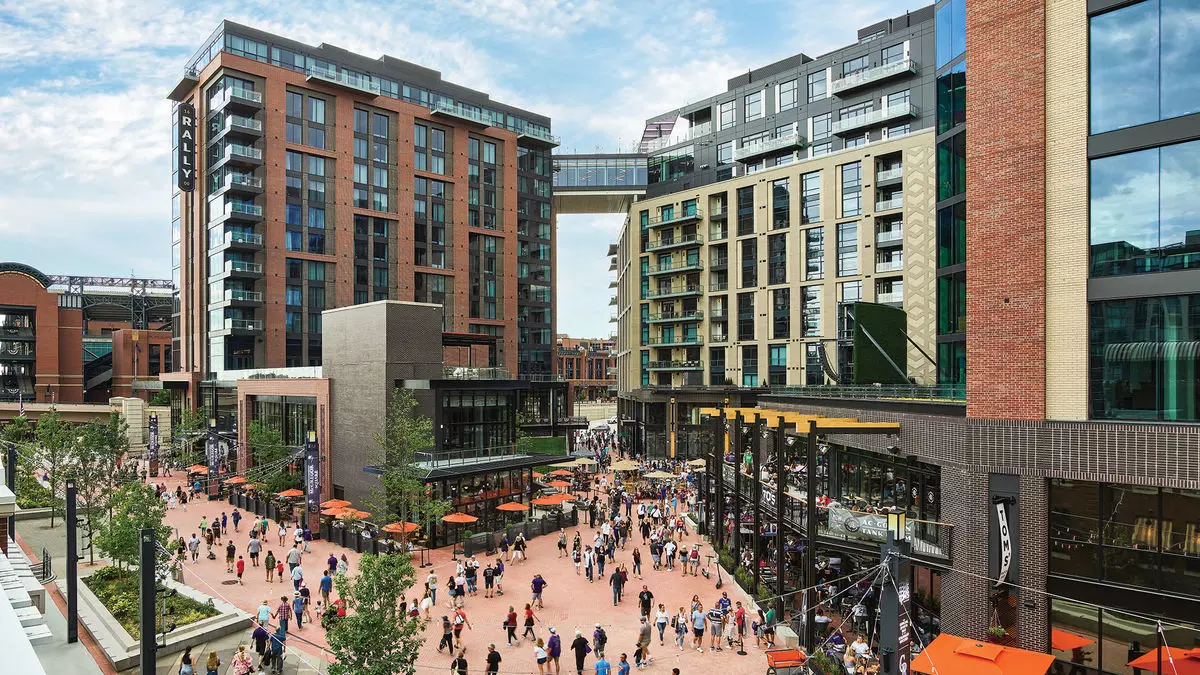As the summer sun beckons baseball fans, vibrant stadiums filled with cheering crowds remind us why Major League Baseball (MLB) remains an integral part of American culture. This summer, when the New York Yankees descend upon Denver over Memorial Day weekend, the atmosphere at Coors Field promises to be electric. More than just local Rockies fans, the city will soon be a hub for avid Yankees supporters from across the globe. According to Walter Isenberg, the driving force behind The Rally Hotel, the unique hospitality experience provided at this establishment has redefined how fans engage with their beloved teams—emphasizing the growing synergy between sports and hospitality.
The Concept of “Sportspitality”
The term “sportspitality” has emerged as a defining principle in the hospitality and sports industries alike. With an increasing number of teams and hotel brands capitalizing on the lucrative sports tourism market, this phenomenon is not merely about offering lodging close to a stadium; it involves creating immersive experiences that merge loyalty, community, and comfort. The Rally Hotel, nestled adjacent to Coors Field, offers more than just a place to stay; it encapsulates the very essence of baseball with design elements that pay homage to America’s pastime. From floor lamps mimicking stadium lights to minibars stocked with classic ballpark snacks, every detail draws fans deeper into the sporting world.
The model serves as a template for team owners. Isenberg points to successful ventures like the L.A. Live complex in downtown Los Angeles, which demonstrates how a holistic, mixed-use approach can amplify fan experience. This evolution champions the notion that stadium proximity enhances hotel desirability, compelling fans to turn their game visit into a full-fledged getaway.
The Broader Appeal of Venue-Adjacent Hotels
The Rally Hotel’s strategic positioning allows it to benefit from the tidal wave of sports tourism exemplified by research from Technavio. Their recent projections suggest massive growth of $701.6 billion in the sports travel market from 2025 to 2029. Isenberg emphasizes that these hotels appeal not only during the MLB season but also throughout the year, creating a versatile destination that keeps the lights shining long after the last pitch is thrown. With Rockies games representing just a portion of the calendar, The Rally can entice guests with community events like movie nights, yoga sessions, and seasonal ice skating.
For hotel owners like Isenberg, the imperative is clear: to transform properties into 365-day attractions. Gone are the days when hotels could afford to depend solely on game-day traffic; they must cultivate diverse offerings that keep doors open and staff employed year-round.
The Competitive Edge in Sports Tourism
“Location, location, location” has always been the mantra in real estate, and it is no different for sports venues. Matt Traub, editor of SportsTravel, indicates that hotels with direct access to stadiums can command premium prices benefiting from high demand. This competitive edge allows hotel chains to create bespoke services for fans, ensuring every stay is infused with the thrill of the game.
A notable example is The Battery Atlanta, a mixed-use development brought to life by the Atlanta Braves Holdings. Echoing similar ambitions in Indianapolis, the forthcoming Shinola Hotel aims to harness its connection with the Indiana Pacers. These advanced developments bolster the idea that the fusion of sports and hospitality can unveil revenue streams that stakeholders previously overlooked, allowing teams to innovate while driving attendance at their venues.
The Future of Sports Tourism in College Towns
The appeal of “sportspitality” is rapidly expanding beyond professional sports into the landscape of collegiate athletics. Partnerships like the recently announced collaboration between Travel + Leisure Co. and Sports Hospitality Ventures represent a deliberate engagement with markets rich in passionate fan bases. Their inaugural resort near the University of Alabama epitomizes a well-rounded strategy aimed at not only capturing tourism revenue but also becoming woven into the fabric of local communities.
With data showing that over 204.9 million trips were taken for sports events in just one year, the economic stakes surround sports tourism are clearer than ever. These initiatives aim to strengthen ties with local universities while recognizing the extensive opportunities that come with engaging dedicated fans, particularly in college towns where fervent allegiance can contribute substantially to tourism growth.
The blend of hospitality and sports is a reflection of a cultural transformation that emphasizes shared experiences, dedicated fandom, and unforgettable moments. The rise of “sportspitality” highlights a successful intersection of two worlds, fostering a symbiotic relationship that resonates with both tourists and communities alike. As the landscape of sports tourism continues to evolve, one can only anticipate the innovative developments yet to come.

